
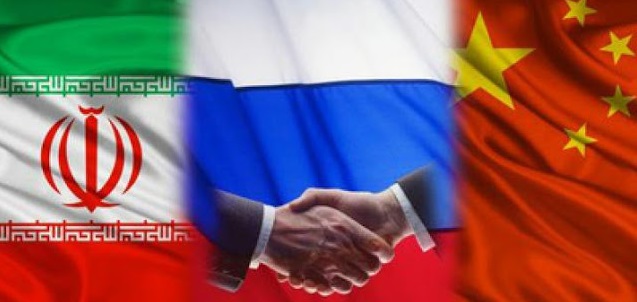
… by F. William Engdahl, with New Eastern Outlook, Moscow
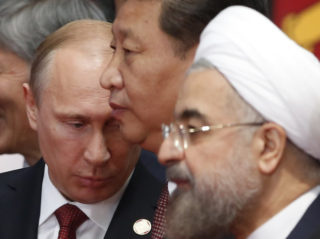
[ Editor’s note: As Mr. Enghahl specializes in this area, we like to use his material to stay abreast of what is going on in China, which includes what they want us to think.
The case in point is Bill’s not being very critical of China’s mostly “all talk and no action”, when it comes to joint work on anti-terrorism, or any real joint defense commitments with teeth in them.
China has done nothing but grab a few cheap headlines in Syria, over some medical supplies “to fight terrorism”, and similarly with Iraq. It is saving its resources for the home front, while others get a “letter of intent”. Iran does not need the military help, but does want to keep China a happy buyer of Iranian oil, via a good balance of payments with buying China products.
But what is 100% solid in the geopolitical shift is how the Eurasian countries view the US and its brat child the EU, as they seek the continued unipolar domination of the world.
We see the proof of this with the huge propaganda investment for conditioning the American public into being fearful of faraway counties that have no real capacity to sustain traditional conflict outside their border areas with feasible supply lines.

VT can find no military or security experts to publicly debate us on the validity of this ongoing threat hoax being rammed down the public’s throat to line them up to pay the tab necessary for our huge 750+ base forward deployment. It is one in which only a handful of key companies have a huge annuity in this never ending base support.
The Russia and China threat hoax ranks up there with the Iranian one that was exposed, but where those pushing the hoax were never attacked afterward for what I call a public relations national security crime. No one in the military, including the veterans orgs, ever went after the fraudsters, showing that they could not be trusted to defend us in such matters.
But because the people themselves were mostly asleep at the wheel, as they are on the current Russia-China threat hoax, the vets experienced no loss of esteem. They pose the question, as their cover, that if the public does not care, then why should they. No one thought the Iran deal could be done and it was, so we are hoping a similar end of the story on this new Eurasian boogeyman, with Iran being bootstrapped back in… Jim W. Dean ]
_________
– First published … November 21, 2016 –
The developing economic, political and military links binding Iran, China and Russia in what I see as an emerging Golden Triangle in Eurasia, are continuing to deepen insignificant areas.
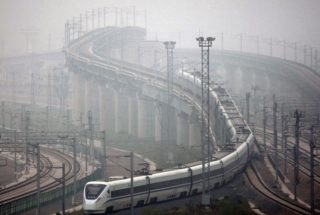
This, while it seems to be US geopolitical strategy in a prospective Trump Administration to distance Washington from both Iran and from China, while dangling the carrot of lessened confrontation between Washington and Moscow – classic Halford Mackinder or Kissinger geopolitics of avoiding a two-front war that was colossally backfiring on Washington by trying to shift the power balance.
At present, the dynamic of the past several years of closer cooperation by the three pivotal states of the Eurasian Heartland is gaining strategic momentum. The latest is the visit of China’s Minister of Defense and of Russian senior officials to Tehran.
On November 14-15 in Tehran, during a high-level visit of the Chinese Defense Minister, General Chang Wanquan, with Iranian President Hassan Rouhani and Iranian Defense Minister Hossein Dehghan, the two major Eurasian nations signed a deal to enhance military cooperation. The agreement calls for intensification of bilateral military training and closer cooperation on what the Iran sees as regional security issues, with terrorism and Syria at the top of the list.
Chief of Staff of the Iranian Armed Forces, Major General Mohammad Hossein Baqeri, said Iran is ready to share with China its experiences in fighting against the terrorist groups in Iraq and Syria. Dehghan added that the agreement represents an “upgrade in long-term military and defense cooperation with China.”
In recent weeks, China has directly become engaged, joining Russia and Iran, at the behest of the government of Syrian President Bashar al Assad, in the war against ISIS and other terrorist groups including Al Qaeda-Al Nusra Front and its numerous spinoffs. The formal agreement with Tehran, which has considerable on the ground experience with the fight in Syria, clearly represents a deepening of bilateral China-Iran relations.
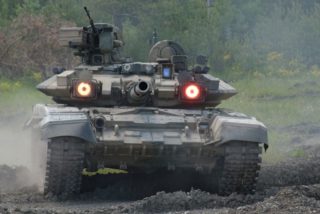
At the same time, as China and Iran were meeting in Tehran, Viktor Ozerov, head of the Defense and Security Committee of the Russian Federation Council, the upper house of the Parliament, was also in Tehran.
There, he told RAI Novosti that Russia and Iran are in talks over an arms deal worth around $10 billion. It calls for Russia to deliver T-90 tanks, artillery systems, planes and helicopters to Iran.
In brief, we have a deepening of military defense links between the three points of the emerging Eurasian Triangle. This will have huge consequences, not merely for stabilization of Syria and Iraq in the Middle East. It will also give a major boost to the emerging economic links between the three great powers of the Eurasian Heartland.
Halford J. Mackinder, the father of British geopolitics variously called Russia the Heartland Power, and towards the end of his life, in a 1943 guest article in Foreign Affairs, journal of the New York Council on Foreign Relations, suggested China might equally play the geographic and political role of Russia as the Eurasian Heartland Power.
Today, given the enormous growth since 1943 of the geopolitical importance of the Persian Gulf oil and gas-producing nations for the world economy, the bonding together of Iran to China and to Russia forms a new Heartland Power, to stay with the designation of Mackinder.
The added element since 2013 is the initiative of China President Xi Jinping to criss-cross all Eurasia and even South Asia with what he calls China’s One Belt, One Road infrastructure.
Both China and Russia have formally agreed to coordinate with China in this multi-trillion dollar vast infrastructure project to link entire new emerging markets of Central Asia, Iran–and potentially Turkey– to a coherent high-speed rail and maritime port network that within the end of this decade will already begin to transform the economic worth of the entire Eurasia.
_________
China-Iran Trade
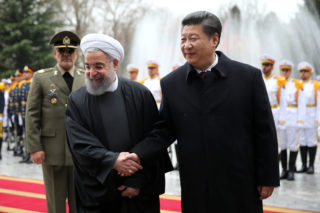
Already, despite onerous US and EU economic sanctions on Iran, Sino-Iranian trade had grown even before the 2015 nuclear agreement loosened some sanctions.
Bilateral trade grew from $400 million in 1989 to almost $52 billion in 2014. Today the Iran-China Chamber of Commerce and Industries (I.C.C.C.I.), has grown from 65 members in 2001 to 6,000, an indication of the intensity of economic cooperation.
On the lifting of sanctions this January, 2016, China President Xi Jinping went to Tehran, where the two countries signed major economic agreements.
After their January 23 talks, Iranian president Rouhani announced that, “Iran and China have agreed to increase trade to $600 billion in the next 10 years,” adding that both countries, “have agreed on forming strategic relations, reflected in a 25-year comprehensive document.”
Moreover, Iran agreed to nuclear energy cooperation and formally participating in China’s One Belt, One Road which Russia and the Eurasian Economic Union countries had formally agreed to join in 2015.
_________
Iran – Key Link

China’s One Belt, One Bridge, sometimes referred to as her New Economic Silk Road, is a brilliant geopolitical, economic, military and cultural project. It will enable the member nations to be far more shielded from USA Naval power to interdict vital goods trade by sea from Europe or the Middle East that must pass through the US-patrolled Strait of Malacca.
As well, while Washington and Brussels impose economic sanctions on Russian trade with Europe, the Ukrainian crisis forced a far more serious Russian “pivot to the East,” notably to China.
What has emerged since the crisis created for Russia with the USA February 2014 Ukraine coup d’état, is a strategic cooperation between the three major powers – Iran, China and Russia, what Zbigniew Brzezinski described in his 1997 book, The Grand Chessboard, as the largest geopolitical challenge facing continued Sole Superpower supremacy of the United States following Washington’s destruction of the Soviet Union in 1989-91.
Brzezinski declared then, accurately, “…how America ‘manages’ Eurasia is critical. A power that dominates Eurasia would control two of the world’s three most advanced and economically productive regions. A mere glance at the map also suggests that control over Eurasia would almost automatically entail Africa’s subordination, rendering the Western Hemisphere and Oceania (Australia) geopolitically peripheral to the world’s central continent.
About 75 per cent of the world’s people live in Eurasia, and most of the world’s physical wealth is there as well, both in its enterprises and underneath its soil. Eurasia accounts for about three-fourths of the world’s known energy resources.”
For the Eurasian cohesion under the China OBOR infrastructure developments, Iran is strategic. Not only is China a major buyer of Iranian oil, Iran’s largest export customer. But Iran is also vital to China’s vision to create entirely new manufacturing and logistics centers or hubs in Central Asia and Europe.
And, as Indian strategic consultant, Debalina Ghoshal points out, China, “has a keen interest in Iran’s geostrategic location, bordering both the Caspian Sea and the Persian Gulf. The location enables China to carry out the One Belt One Road agenda.”
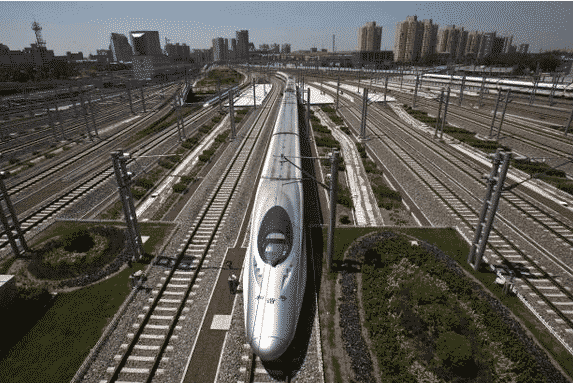
Iran is already partly linked to a recently-completed section of China’s OBOR rail-port infrastructure great project. In early 2015 rail freight began to move across the new Zhanaozen—Gyzylgaya—Bereket—Kyzyl Atrek—Gorgan railway, completed in December, 2014 in the impressive time of five years from start.
That rail line links Iran to China via the rail line through Turkmenistan and Kazakhstan, a founding member of the OBOR idea since Xi Jinping first unveiled it in a visit to Kazakhstan in 2013. The new rail link, known as the North-South Transnational Rail Corridor connects Iran to Kazakhstan via Turkmenistan and on to the China border.
The new rail line runs 908 kilometers, beginning at Uzen in Kazakhstan (120 km), then through Gyzylgaya-Bereket-Etrek in Turkmenistan (700 km) and ending at Gorgan in Iran (88 km). As a result of the new rail link, freight traffic is shifting from truck to rail as the line connects all key ports and terminals of the entire Caspian region.
The recently completed Uzen to Gorgan rail line as part of the OBOR is transforming the economic importance of an entire part of Central Asia.
The new Iran-Turkmenistan-Kazakhstan to China rail line will transform the entire economic significance of the vast Central Asian region. Bereket in Turkmenistan — which is at the crossroads of the existing Trans-Caspian rail line linking Turkmenbashi on the Caspian Sea with Uzbekistan, Eastern Kazakhstan and China — is now to be site of a large locomotive repair depot together with a modern state-of-the-art freight terminal, making it a major freight hub.
Further, the Turkmen government is building a huge port at Turkmenbashi that would enable further trade links potentially to the Russian Federation by sea. The rail link to Gorgan in Iran already is linked to Iran’s national railway grid and will thereby enable rail transport between China, Central Asia and the Persian Gulf. The connection will shorten the route by 400 km, and reduce freight transport time more or less in half, from 45-60 days at present to 25-30 days. This is a huge economic gain.
Since April this year as well, Moscow and Tehran have been engaged in discussions of building a ship canal from the Caspian Sea to the Persian Gulf through Iran. Russia, Azerbaijan and Iran also agreed to speed up the talks on a North-South transport corridor that partly would go along the western coast of the Caspian Sea from Russia to Iran through Azerbaijan.
The North-South corridor, when completed will reduce the time of cargo transport from India to Central Asia and Russia from at present about 40 days from Mumbai, India to Moscow to 14 days and bypass the congested and expensive Suez Canal.
Everywhere we go today across Eurasia, from the Persian Gulf and Caspian Sea to Russia, Kazakhstan, Turkmenistan, and on to China, there is a process underway for the first time since the original Silk Road era of more than two thousand years ago, of building up an entire new economic space, the Eurasian Heartland. Were the Turkish government to join the OBOR project wholeheartedly, the potentials for a Eurasian transformation would become enormous.
It remains to be seen what a USA with a Trump presidency will do or not do to try to destroy this beautiful Eurasian build up.
If he is as wise as his sound bites make him sound, he will recognize that this kind of development is the only true future for his United States other than bankruptcy, economic depression and wars of destruction.
If not, more and more much of the rest of the world seems determined to go it without the “Sole Superpower.”
F. William Engdahl is strategic risk consultant and lecturer, he holds a degree in politics from Princeton University and is a best-selling author on oil and geopolitics, exclusively for the online magazine “New Eastern Outlook.”
_____________
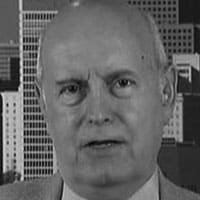
Jim W. Dean is VT Editor Emeritus. He was an active editor on VT from 2010-2022. He was involved in operations, development, and writing, plus an active schedule of TV and radio interviews. He now writes and posts periodically for VT.
ATTENTION READERS
We See The World From All Sides and Want YOU To Be Fully InformedIn fact, intentional disinformation is a disgraceful scourge in media today. So to assuage any possible errant incorrect information posted herein, we strongly encourage you to seek corroboration from other non-VT sources before forming an educated opinion.
About VT - Policies & Disclosures - Comment Policy

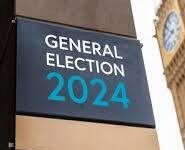


Comments are closed.